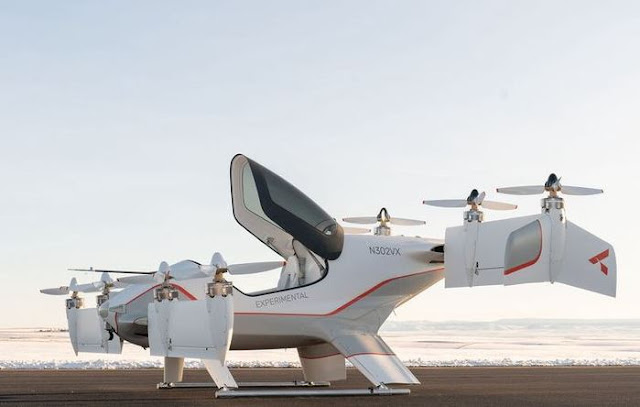Airbus A³ Vahana eVTOL Aircraft Review and Specifications
aircraftconcept.com – Airbus A³ Vahana (pronounced A-cubed) is a prototype of a full-scale self-piloting electric 8-prop tilt wing vehicle. This is intended to fly one passenger or cargo along a designated flight path. In February 2019, the program had flown more than 50 hours with the first unmanned demonstrator, Alpha One, and launched the second, dubbed Alpha Two.

On May 20, 2019, a new Vahana article revealed that Alpha Two was a full-scale demonstrator, had a finished interior and was located in Pendleton, Oregon, USA. Alpha Two is equipped with a special system for feeling and avoiding obstacles in the air. This aircraft will be fully autonomous and in addition, the aircraft must be able to feel the land infrastructure, other eVTOL aircraft, drones, airplanes, helicopters, birds, cables, trees, weather conditions and more. In addition, the aircraft must avoid all obstacles during takeoff, flight ahead, and when landing and be very fast in all phases of flight.

The A³ Vahana aircraft was designed with the aim of being used specifically as a single-seated (finally multiplied) air taxi for urban mobility. Flying independently, it will only follow a predetermined flight path making a small deviation if obstacle avoidance is needed.

Airbus A³ Vahana Development
The A³ Vahana Project began as one of the first projects of the Airbus Group Advanced Project and Partnership Post in California Silicon Valley. This group is intended to operate with innovative concepts that are strong and span more aggressively than traditional industries. Demonstrator aircraft will be launched in 2020 which can be produced and are able to provide more than 1 billion flight hours every year.On May 20, 2019, a new Vahana article revealed that Alpha Two was a full-scale demonstrator, had a finished interior and was located in Pendleton, Oregon, USA. Alpha Two is equipped with a special system for feeling and avoiding obstacles in the air. This aircraft will be fully autonomous and in addition, the aircraft must be able to feel the land infrastructure, other eVTOL aircraft, drones, airplanes, helicopters, birds, cables, trees, weather conditions and more. In addition, the aircraft must avoid all obstacles during takeoff, flight ahead, and when landing and be very fast in all phases of flight.

Airbus A³ Vahana Specifications
Airbus A³ Vahana uses eight 60 hp (45 kW) motors located on the forward and back sloping wings. About one third of its mass is the battery (600 lb / 272 kg). The sensor circuit uses an active camera and Lidar and Radar. It has seats with collision values and ballistic parachutes that are intended to work even at low altitudes.The A³ Vahana aircraft was designed with the aim of being used specifically as a single-seated (finally multiplied) air taxi for urban mobility. Flying independently, it will only follow a predetermined flight path making a small deviation if obstacle avoidance is needed.








0 Response to "Airbus A³ Vahana eVTOL Aircraft Review and Specifications"
Post a Comment